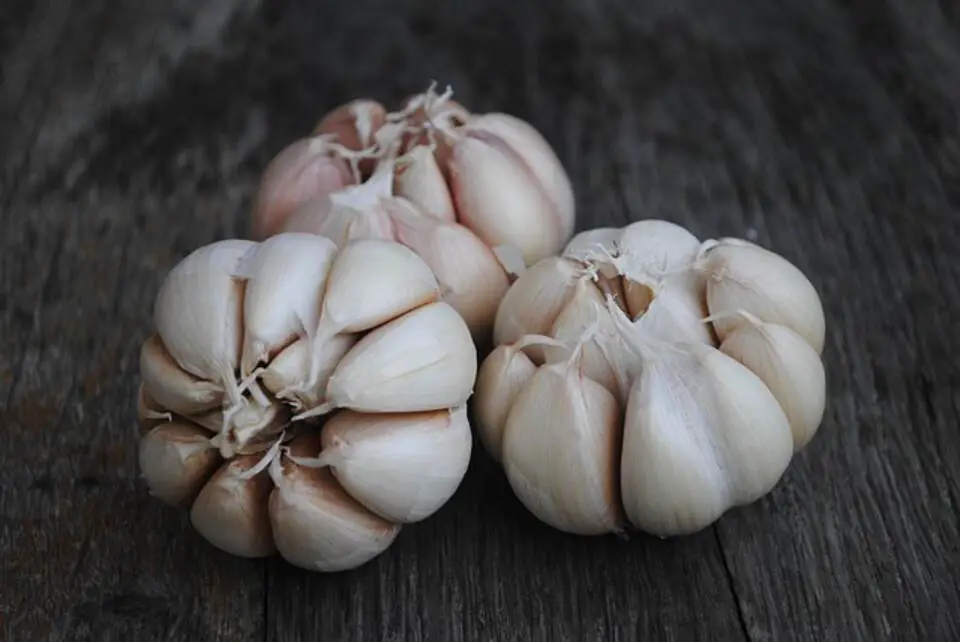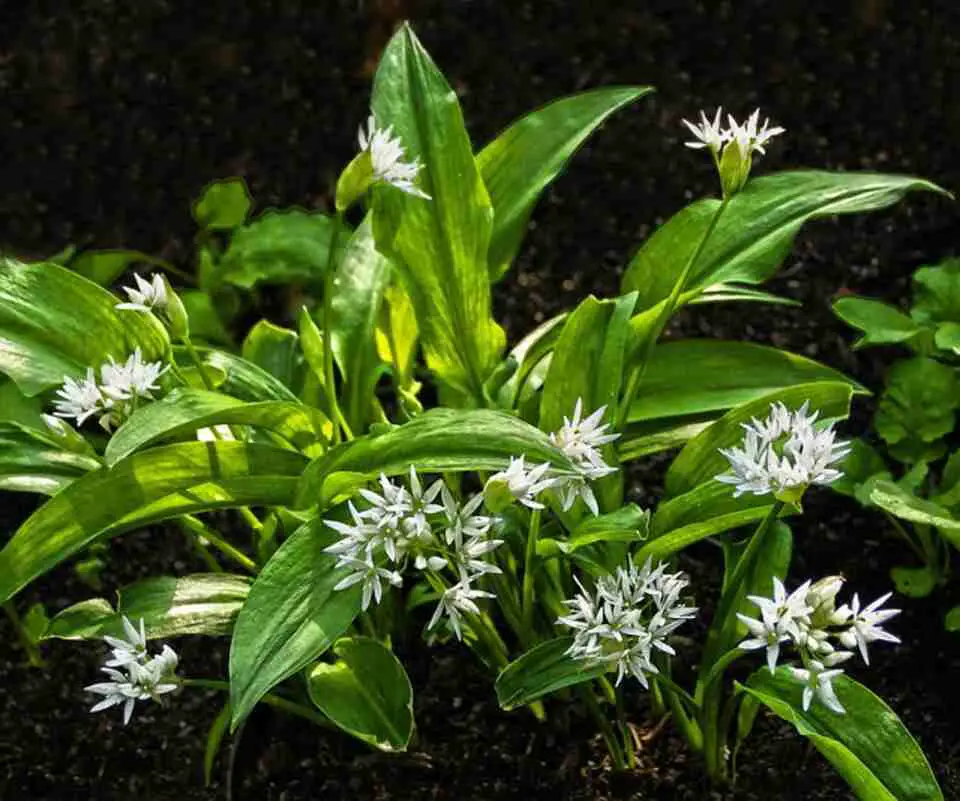How to Grow Garlic at Home: Full Beginner’s Guide!
Think growing garlic at home is hard? Think again. If you’ve ever wondered how to grow garlic at home, the good news is that it’s easier than you might expect. With just a few cloves, a sunny spot, and the right soil, you can enjoy fresh, flavorful garlic straight from your garden. In this complete grower’s guide, you’ll learn exactly when and how to plant, care for, and harvest garlic like a pro.
Table of Contents
- 1 Why Grow Garlic?
- 2 Choosing the Right Garlic Variety
- 3 When to Plant Garlic
- 4 Preparing Your Soil
- 5 How to Plant Garlic
- 6 Step-by-Step Planting Instructions
- 7 Caring for Garlic as It Grows
- 8 Harvesting Garlic
- 9 Common Garlic Growing Mistakes to Avoid
- 10 Storing and Using Your Garlic
- 11 Advanced Tips for Bigger, Healthier Bulbs
- 12 Frequently Asked Questions
- 13 Conclusion
- 14 Author
Why Grow Garlic?
Garlic is more than just a kitchen staple-it’s a powerhouse ingredient that brings depth and complexity to countless dishes. Growing your own garlic means you control the quality, flavor, and freshness, all while saving money and reducing your reliance on store-bought bulbs. It’s also a low-maintenance crop, making it perfect for busy gardeners or those with limited space.
Garlic’s natural pest-repellent properties can benefit your entire garden, and its long storage life means you’ll have access to homegrown flavor well beyond the harvest season. Plus, cultivating garlic connects you with gardening traditions from around the world, adding a rewarding dimension to your gardening experience.
Choosing the Right Garlic Variety
- Hardneck Garlic: This variety is well-suited to colder climates, where it develops a central flowering stalk known as a scape. The cloves are generally larger and easier to peel, making them a favorite among chefs and home cooks alike. Hardneck garlic also offers a more complex flavor profile and produces scapes, which are edible and delicious in their own right. However, it tends to have a shorter storage life compared to softneck types.
- Softneck Garlic: Best grown in regions with milder winters, softneck garlic is the variety most commonly found in supermarkets. Its bulbs contain more cloves per head, and it stores exceptionally well, often lasting up to a year under the right conditions. Softneck garlic is also more flexible when it comes to braiding for storage, adding a decorative touch to your kitchen or pantry.
Choosing the right variety for your climate and culinary preferences is the first step to a successful garlic harvest.
When to Plant Garlic
Optimal Planting Times
- Fall Planting: For most gardeners, fall is the ideal time to plant garlic. Sowing cloves from late September through November allows the roots to establish before winter sets in, resulting in larger, healthier bulbs come harvest time. The cold period helps trigger bulb development, making fall planting the preferred method for robust yields.
- Spring Planting: If you missed the fall window or live in a region with harsh winters, spring planting is still possible. Plant your cloves as soon as the soil can be worked, typically in early spring. While spring-planted garlic may produce slightly smaller bulbs, careful mulching and attentive care can still yield a rewarding crop.
Understanding the best planting time for your region ensures your garlic gets off to the strongest possible start.
Preparing Your Soil
Soil Requirements for Garlic
- Rich, Well-Drained Soil: Garlic thrives in soil that is both fertile and loose, allowing roots to spread easily and bulbs to develop fully. Incorporate plenty of organic matter, such as compost or well-rotted manure, to boost fertility and improve soil structure. If your soil is heavy clay, consider adding sand or coconut coir to enhance drainage and prevent waterlogging, which can lead to rot.
- pH Level: Garlic prefers a slightly acidic to neutral soil, with a pH between 6.0 and 7.0. If your soil is too acidic, add garden lime several weeks before planting to raise the pH. Testing your soil beforehand helps you make precise adjustments for optimal growth.
- Avoid Compaction: Compacted soil restricts root expansion and bulb formation. Prepare raised beds or loosen the soil to a depth of at least 8 inches, and avoid stepping on the beds once they’re prepared. This attention to soil health sets the stage for a successful garlic crop.
How to Plant Garlic
Step-by-Step Planting Instructions
- Break Apart Bulbs: Begin by gently separating each garlic bulb into individual cloves, taking care to keep the papery skins intact. Only use the largest, healthiest cloves for planting, as these will produce the most vigorous plants and sizable bulbs.
- Optional Soak: For an extra boost, soak your cloves in a solution made from fish and kelp fertilizer mixed with a bit of baking soda (about one tablespoon per gallon of water) for 8 to 24 hours. This process can help promote early root development and reduce the risk of fungal diseases.
- Planting Depth and Spacing:
- Insert each clove into the soil with the flat, root end facing down and the pointed tip up. Plant cloves about 2–3 inches deep to protect them from temperature fluctuations and pests.
- Space each clove 4–6 inches apart within rows, and keep rows at least 6 inches apart to allow for adequate air circulation and growth.
- Mulch Well: After planting, cover the bed with a generous 4–6 inch layer of mulch, such as straw, shredded leaves, or untreated grass clippings. Mulching insulates the soil, retains moisture, and suppresses weeds, all of which contribute to healthy garlic growth.
- Water Thoroughly: Give your newly planted cloves a deep watering to settle the soil around them and encourage strong root establishment. Consistent moisture is key, especially during the initial growth phase.
Following these steps carefully will give your garlic the best possible start.
Caring for Garlic as It Grows
Watering and Fertilization
- Consistent Moisture: Garlic needs steady moisture to develop large, healthy bulbs. Aim to provide about one inch of water per week, adjusting for rainfall and temperature. During dry spells in spring and early summer, be vigilant with watering, but reduce or stop watering as harvest approaches to prevent rot.
- Fertilize: Garlic is a heavy feeder, especially during its rapid spring growth phase. Apply a balanced, slow-release fertilizer at planting and again in late winter or early spring. Organic options like blood meal or fish emulsion can provide the necessary nutrients without risking chemical buildup.
Weeding and Maintenance
- Keep Beds Weed-Free: Weeds compete with garlic for nutrients and water, which can stunt bulb development. Regularly inspect your garlic bed and remove weeds by hand or with a hoe, being careful not to disturb the shallow garlic roots.
- Remove Flower Stalks (Scapes): For hardneck garlic varieties, watch for the emergence of curly flower stalks called scapes in late spring. Snip these off as soon as they appear to redirect the plant’s energy into producing larger bulbs. Scapes are edible and make a tasty addition to stir-fries, pestos, and salads.
Diligent care throughout the growing season sets the stage for a healthy, abundant harvest.
Harvesting Garlic
When and How to Harvest
- Timing: Garlic is ready to harvest when the lower half of the leaves have turned brown and dried out, while the upper leaves remain green and vibrant. This typically occurs 90–150 days after planting, depending on your garlic variety and local climate. Harvesting at the right time is crucial for flavor and storage quality.
- Harvesting Method: Use a garden fork or spade to gently loosen the soil around each bulb before lifting it out. Avoid pulling the stems directly, as this can damage the bulbs or separate them from their tops. Handle bulbs gently to prevent bruising.
- Curing: After harvesting, brush off excess soil (do not wash), and lay the bulbs out in a single layer in a shaded, well-ventilated area. Allow them to cure for 2–3 weeks, turning occasionally to ensure even drying. Proper curing is essential for long-term storage and enhances the flavor of your garlic.
- Trimming: Once the outer skins are papery and the necks are dry, trim the roots and cut the stems to about an inch above the bulb. Store the cured garlic in mesh bags or baskets in a cool, dry place with good airflow.
Harvesting and curing garlic with care ensures the best flavor and storage potential.
Common Garlic Growing Mistakes to Avoid
- Planting Cloves Upside Down: Always plant cloves with the flat, root side facing down and the pointed tip up. Planting them upside down can result in weak growth or misshapen bulbs, reducing your harvest’s quality.
- Using Poor Soil: Garlic planted in dense, compacted, or poorly drained soil will struggle to develop large, healthy bulbs. Take the time to amend your soil with organic matter and ensure good drainage before planting.
- Harvesting Too Early or Late: Pulling garlic before it’s mature can result in small, underdeveloped bulbs, while leaving it in the ground too long can cause the bulbs to split or rot. Monitor your plants closely and harvest when the lower leaves have browned but the upper leaves are still green.
Avoiding these common pitfalls will help you achieve a successful, high-quality garlic harvest.
Storing and Using Your Garlic
- Storage: Once cured, store your garlic in a mesh bag, basket, or braided bundles in a cool, dry, and well-ventilated location. Avoid storing garlic in the refrigerator, as cold temperatures can trigger sprouting. Properly stored garlic can last for six months or more, providing you with fresh, homegrown flavor all year long.
- Using Fresh Garlic: Freshly harvested garlic can be used immediately, but allowing it to cure intensifies its flavor and improves its texture for cooking. Enjoy your garlic raw in dressings and salsas, roasted whole, or chopped into your favorite dishes. Homegrown garlic offers a depth of flavor that store-bought bulbs can’t match.
Storing garlic correctly ensures you enjoy the fruits of your labor for months.
Advanced Tips for Bigger, Healthier Bulbs
Crop Rotation: To minimize disease and pest buildup, avoid planting garlic (or other alliums like onions) in the same spot more than once every three or four years. Rotating crops helps maintain soil health and reduces the risk of common garlic diseases.
Companion Planting: Garlic is known to repel certain garden pests, making it a great companion for crops like tomatoes, carrots, and lettuce. However, avoid planting garlic near beans and peas, as it can inhibit their growth.
Soil Testing: Conduct a soil test each year before planting to monitor nutrient levels and pH. This allows you to make targeted amendments, ensuring your garlic has all the nutrients it needs to thrive.
Implementing these advanced strategies can lead to larger bulbs and healthier plants season after season.
Frequently Asked Questions
Can I grow garlic from grocery store bulbs?
- While it’s possible, using grocery store garlic can introduce disease and may not be suited to your local climate. For best results, purchase certified seed garlic from a reputable supplier, ensuring healthy plants and a successful harvest.
What if my garlic forms only one large clove?
- Occasionally, garlic will produce a single, round clove called a “singleton” or “round.” This is usually due to planting too late or environmental stress. You can replant these rounds the following season, and they should develop into full bulbs.
Can you plant garlic if the sheath comes off?
- Yes, you can still plant garlic even if the sheath (the papery skin around the clove) comes off. The sheath mainly protects the clove during storage but isn’t essential for growth. Just plant the individual cloves with the pointed end facing up and the root end down, about 2 inches deep in well-drained soil. Make sure the cloves are healthy and firm for the best results.
These insights help you troubleshoot common issues and make the most of your garlic-growing experience.
Conclusion
Growing garlic at home is a fulfilling project that offers culinary, health, and gardening rewards. By choosing the right variety, preparing your soil with care, and following best practices for planting, maintenance, and harvesting, you’ll enjoy a bountiful crop of flavorful garlic. Avoid common mistakes, store your harvest properly, and experiment with advanced techniques to improve your results each year. With patience and attention, your garlic garden will become a reliable source of pride and deliciousness for seasons to come.
Ready to get started? Plant your garlic this season and discover the difference homegrown can make-your kitchen and your taste buds will thank you!











